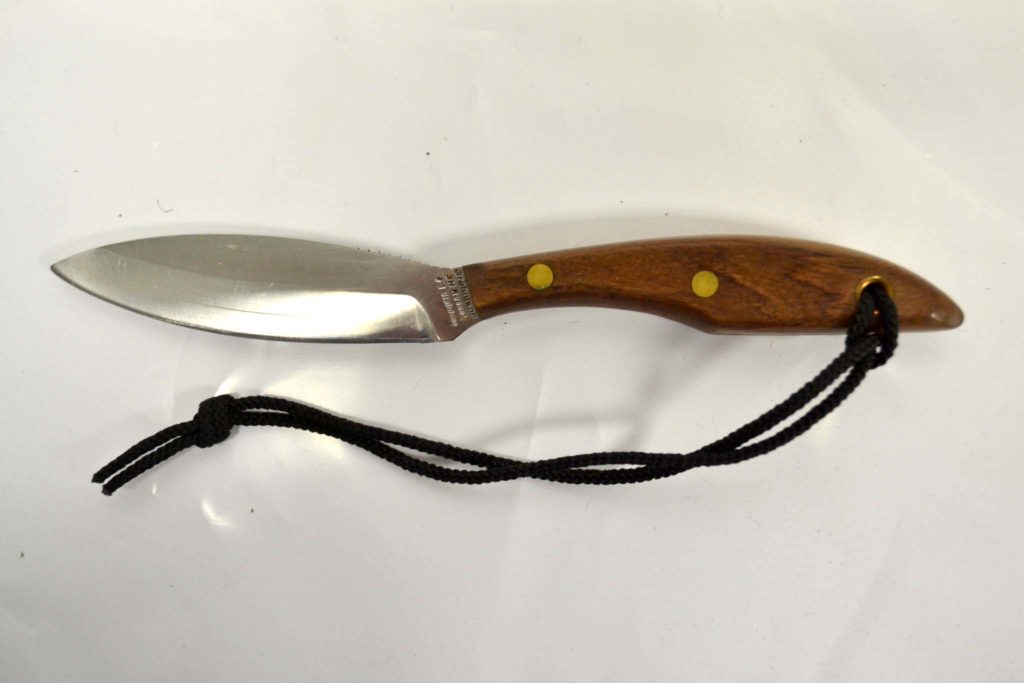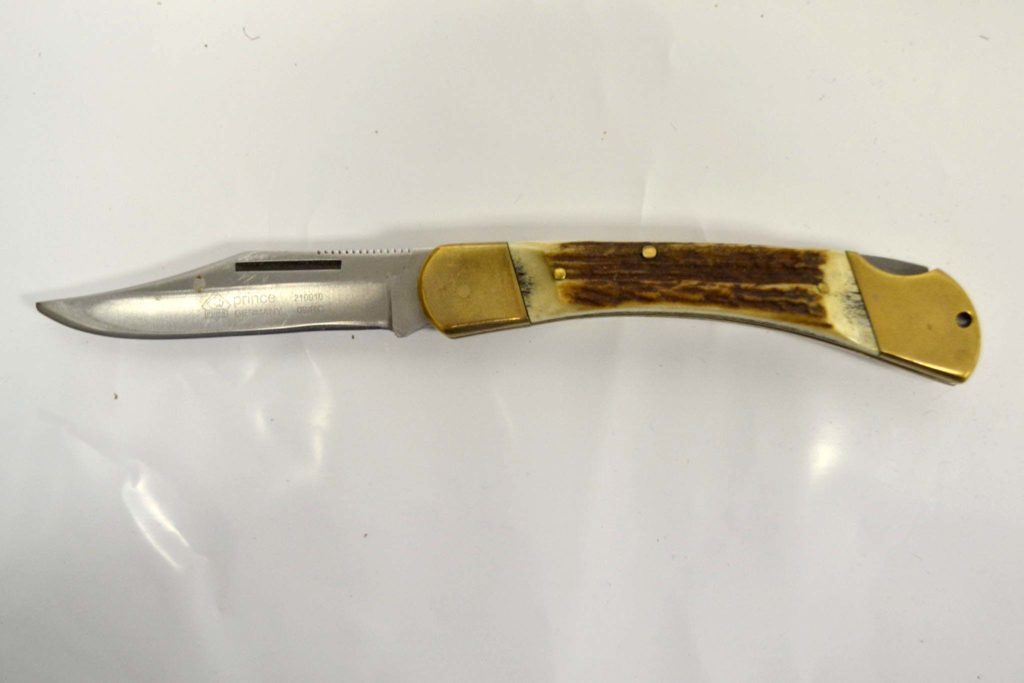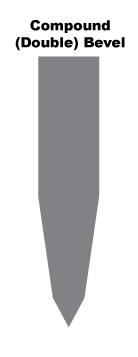
I’ll admit it, I’m a bit of a knife collector…but not like a hide in my basement wearing black leather pants, chainmail and playing World of Warcraft while caressing a custom-made Katana blade type of knife collector.
I’m more the kind of knife collector that buys several similar hunting knives in various blade styles and steels and then bitterly regrets spending hundreds of dollars on knives. It is obvious that they are never going to see the light of day, as I am inevitably going to bring my trusty hunting knife that I’ve owned for years and really have no need to replace.
Some people believe that a good hunting knife needs to be a massive affair, designed more for chopping down trees or fighting hordes of zombies than for basic camp purposes. To me, ginormous bowie knives, or comically oversized Tantos, are best left at home for times where the zombies are coming and you really need something huge to hold before your brains get eaten.
For me, the perfect hunting knife has the following characteristics – it’s got to be shaped in such a way that it can gut a deer, clean a bird, or butcher a rabbit with ease. It’s also got to be robust enough to handle most camp chores and in a pinch and can be abused for batoning wood for fire (in case I get lost in the woods). The handle has got to be comfortable and easily maneuverable for detailed tasks, and finally, my ideal hunting knife has to hold an edge well and be easy to sharpen.
I found that knife years ago. It is a Grohmann Canadian Belt Knife. The Grohmann is extremely comfortable to use and not overtly big – the total length of the knife is 8 ½ inches with a blade length of 4 inches. The steel is a high carbon stainless steel (for all you knife nerds I believe it is a 4110 stainless) and it sharpens up quickly while holding an edge for a good long time.
The blade shape is a bit unusual in that it’s an elliptical design which gives it a great point for piercing and a beautiful curve that works extremely well for skinning. I also really appreciate that Grohmann is a Canadian company based out of Pictou Nova Scotia. Out of all the knives I own, this is the one that stays on my belt when I’m in the woods.
There are many knives to choose from and it seems most people use what their father or grandfather used before them. A great example of this would be the trusty Buck 110 folding knife. I have one that was given to me by my grandfather. When I retired that knife I replaced it with a similar style of folding knife by Puma Knife Company called the Puma Prince. Similar to the Buck 110 in shape, the Prince features a clip point blade and is made of 440c stainless steel. Both of these knives hold a great edge and will take care of any game cleaning duties that are thrown at it. These folders are also an excellent choice for people that don’t necessarily want a fixed blade dangling from their belt.

If your tastes lean more towards modern design, SOG, Spyder Co. and Benchmade all build beautiful hunting knives that look less like Grandpa’s but are all extremely well designed.
A bit about steels
There are many different types of steels that are used in blade making and when looking at a chart it’s easy to go buggy eyed staring at different numbers and designations. More importantly, all the average hunter needs to know is this: Is it easy to sharpen? And will it hold an edge? With that said here are a few common steel types found in hunting knives.
420HC: This is older steel that can be found in many budget line knives. It’s easy to sharpen but doesn’t really hold an edge well. There is one exception to this – Buck Knives. Buck uses 420HC however they use a special heat treatment which aids in edge retention.
4110: Comparable to 440c steel, this is a high carbon stainless steel that offers rust resistance, great edge retention and is easy to sharpen.
S30V: This is an American made powder steel. While this steel has an incredible edge retention it can be harder to sharpen. That said it holds an edge for a long time so you don’t have to touch it up very often.
Aus-8: A fairly common stainless steel. Aus-8 can be found in many mid-priced knives. This steel has good edge retention, great stain resistance and is not super hard to sharpen.
D2: D2 tool steel found mostly in industrial settings. It is hard, tough and a great choice for knives. Not a ton of companies use this steel but those that do generally charge accordingly.
Knife Edge Grinds
There are a myriad of different grinds found on knives these days. Again, between custom grinds, combinations of grinds and modified grinds it’s enough to make you want to crawl into the closet and hide under a pile of coats. I’ve chosen three common grinds and listed their strengths and weaknesses here so you can make an informed choice on your next hunting knife.
Hollow Grind: This is the grind you’ll most likely find on Grandpa’s old hunting knife. The hollow grind has a concave grind to the edge so that both sides of the edge bow inward until they meet. This produces a thin and extremely sharp edge which while excellent for field dressing is not that durable and needs constant touch-ups under heavy use.

Convex Grind: Convex edges are extremely durable and super sharp. They are also one of the most difficult edges to sharpen on a flat sharpening stone. The edge bevel on each side of the blade is slightly rounded as they taper inwards to form the edge. Commonly found on axes, the convex grind allows the edge to not bind up in wood while chopping.

Compound Bevel: This is likely the most common grind that you can find on modern blades. While it cannot be present without one of the grinds mentioned, the compound bevel is a secondary bevel that is added to an existing grind. The compound bevel is what forms the actual edge of the blade and helps with durability.

So now you’ve got some basic information and you’re armed for bear (don’t chase bears with knives, they don’t like it and it’s just a figure of speech!) . You’ve got the basics to make an informed decision however picking the perfect hunting knife is an extremely personal experience as what works for me may not work for you, so here is my final piece of advice:
Check out as many knives as possible. With so many shapes, steels and styles to choose from, it’s worth slowing down and deciding on what works best for you. Happy hunting!

